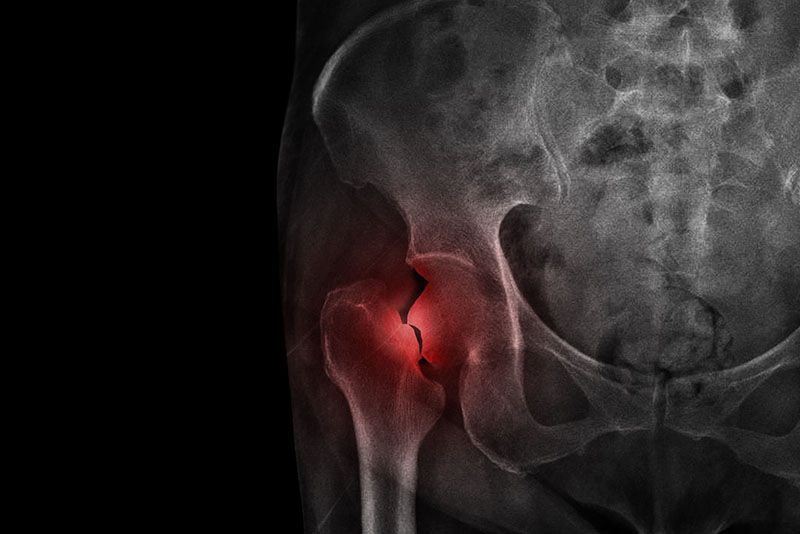Hip Fractures
Hip fractures come in different forms. Whether you fell onto the porch, on the driveway, or off a ladder, the type of fracture tells us what treatment you need.
Hip fractures at the neck of the femur can cause a serious condition called avascular necrosis of the femoral head. In other words, the ball of your hip can break down over time if left untreated.
If the fracture is lower down the femur, there is much less risk for avascular necrosis and therefore more options to treat the injury. In most cases, this type of injury requires surgery.
Causes and Risk Factors
Osteoporosis, obesity, women, and repeated falls place you or your loved one at a higher risk for hip fractures.

Symptoms
- Unable to put weight on the leg
- Painful weight bearing on the affected hip
- Bruising
- Tender to touch
Diagnosis
Often a series of x-rays can show the extent of the fracture. In some cases, patients may need further imaging to fully evaluate the extent of the injury.

Treatments and Recommended Imaging
If you have hip pain come into the office to be evaluated. If the pain is severe go to the emergency room. Whether in the emergency room or in our office, we will start with X-rays and discuss the need for surgical options on a case-to-case basis.
Some surgical options include femoral rodding, partial or total hip replacements, open reduction and internal fixation, or femoral neck systems. Based on your or your loved one’s situation, we can discuss in detail the features, risks, and benefits of each procedure.
No matter the procedure necessary, we will be there with you as you recover. Recovery starts with physical therapy. We will focus on getting you or your loved one back to daily function.
McMahon, Patrick J., and Harry B. Skinner. Current Diagnosis & Treatment in Orthopedics. 6th ed., McGraw-Hill Medical, 2021.
Jennifer, Rynders, and Sara D Hart. Orthopaedics for Physician Assistants. 1st ed., Elsevier – Health Science, 2013.
